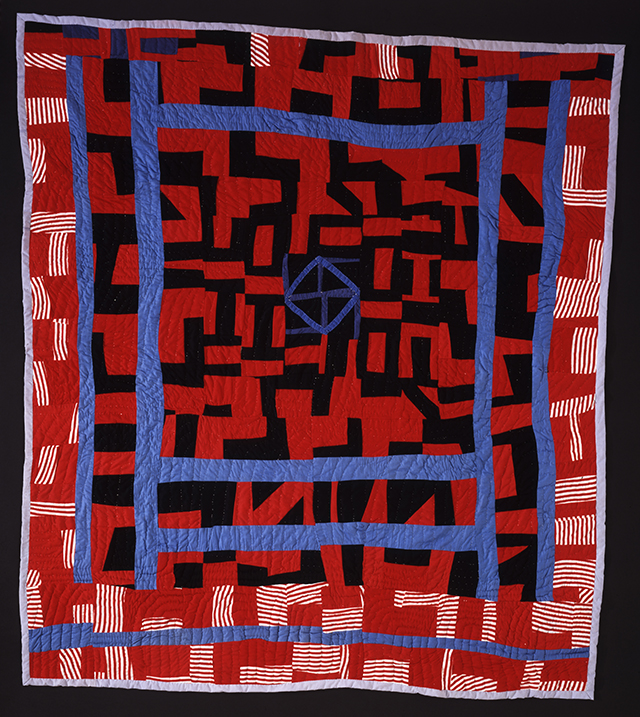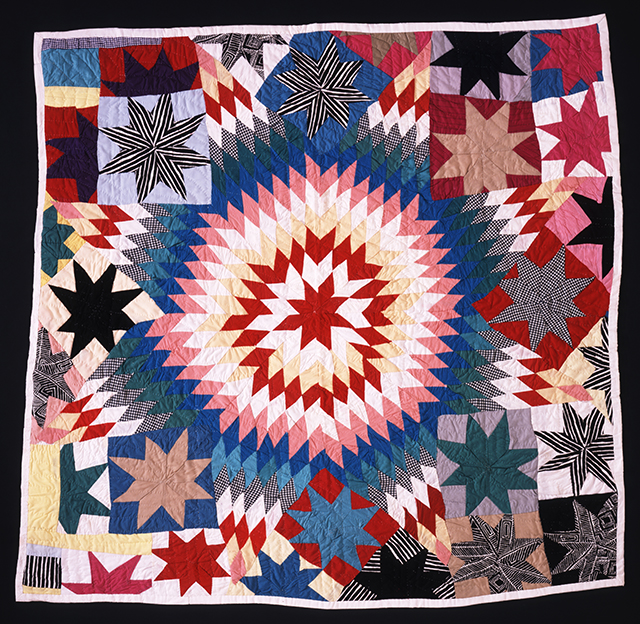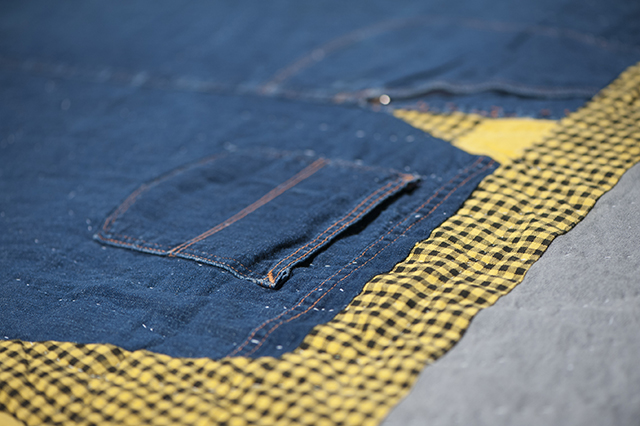A quilt at its most basic is three layers (quilt top, backing and batting — that’s the layer of insulation between the top and bottom layers) connected by the process of stitching a pattern through all three. Within that structure, a quilt can be many things — a functional necessity, a memorial, an heirloom or a work of art. Yo-Yos and Half Squares: Contemporary California Quilts, an exhibition of improvisational quilts from the collection of Eli Leon, proves those categories are not exclusive.
The artists behind this Oakland Museum of California (OMCA) exhibition — Angie Tobias, Arbie Williams, Mattie Pickett, Rosie Lee Tompkins and Sherry Byrd — are all African-American women who at one time resided in the Bay Area. Their quilts are vivid, free-form and anything but soporific. They incorporate nontraditional materials like crushed velvet, denim and beaded belts, and make wild departures from traditional patterns.

Unlike many art forms, where a sketch or an underpainting allows the artist to imagine their work in its finished state long before that moment of completion, an improvised quilt unfolds as it is made, each piece changing the balance and shape of the composition as a whole. In painting terms, quilting is like stitching together a canvas, piece by pre-painted piece.
While some quilts play with color, material and print, the works on view at OMCA abandon tradition almost entirely. Instead of time-honored arrangements of geometric shapes, quilts like Texas Star (pieced by Mattie Pickett, quilted by Willia Ette Graham) reference the familiar without succumbing to it. The result is thrilling: the tight starburst arrangement gradually crumbles into diamonds of pulsating color as it moves to the outer edges of the fabric.

Collector Eli Leon’s particular passion for quilts began while he was pursuing another passion: collecting green things. The entry to Yo-Yos and Half Squares is a portal of shiny green plastic. Inside the exhibition a green-painted space showcases a quilt of Leon’s own making, along with what I presume to be a very small sampling from his stockpile of green objects.
The quirkiness of the collector seeps through again and again in the exhibition’s wall text. Most of the works were pieced by one woman and quilted by another, sometimes in the same year, sometimes over a span of decades. Leon was the conduit from one quilter to another. At times he requested changes to a quilt top design. Once he even cut off the edge of quilt that he thought was uneven.

(detail). (Courtesy of collection of Eli Leon; Photo: Terry Lorant)
In the fine art world, altering a quilt top seems akin to an unasked-for “improvement” on someone else’s artwork. But in the world of textiles, it’s not rare for piecers to outsource their quilting. Intention is secondary, in this context, to a communal understanding of how quilts should be finished. In Mamaloo, a work featuring whole pant legs and sleeves stitched on a bed of black and yellow gingham, quilter Willia Ette Graham left the pockets of Arbie Williams’ original composition open, should anyone wish to stash some spare change in the quilt later down the line.
While Leon’s very active hand in these quilters’ processes clashes with my understanding of fine art, viewing this work in a place like OMCA is a pleasurable learning experience.
This incredible showcase of talent — informed by generations of instruction — transcends the realms of craft, folk art or whatever sub-category one might assign to work not usually seen on the walls of a museum. It is then simply inspiring — a little bit of chaos in a well-ordered world.
And as my quilter friend remarked as we emerged from Yo-Yos and Half Squares, it felt weird to look at straight lines again.